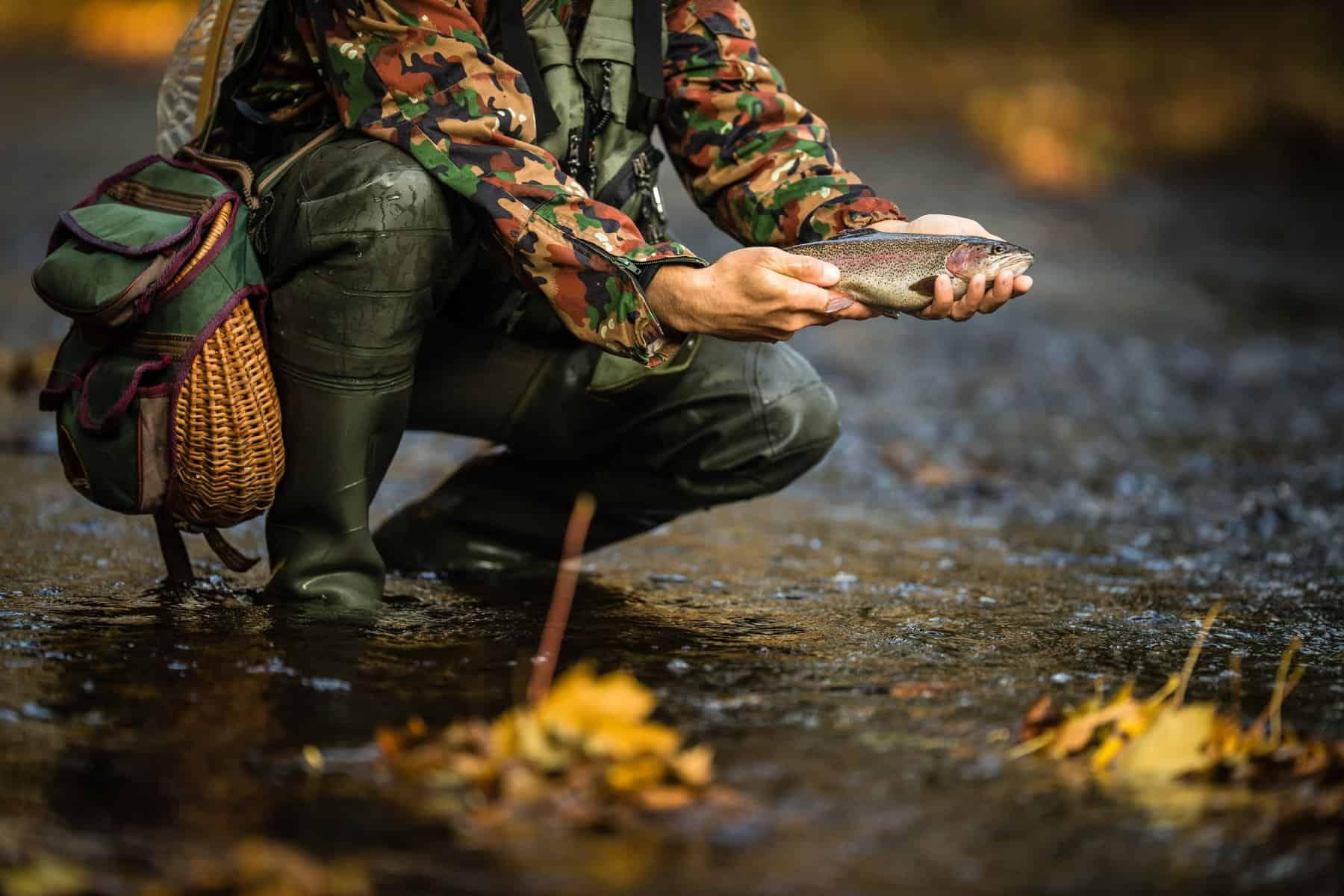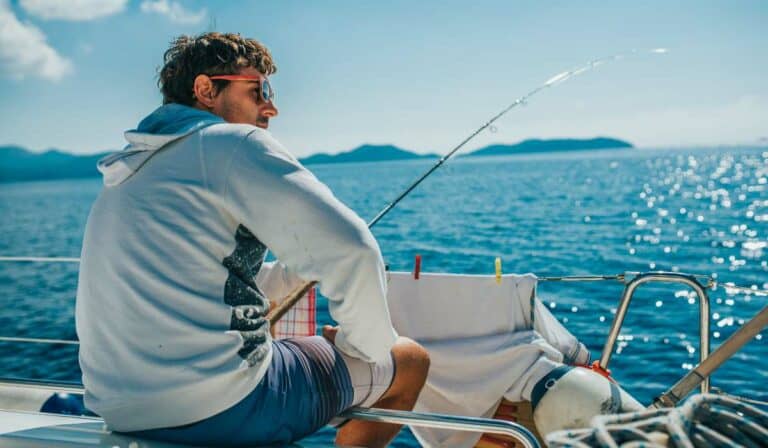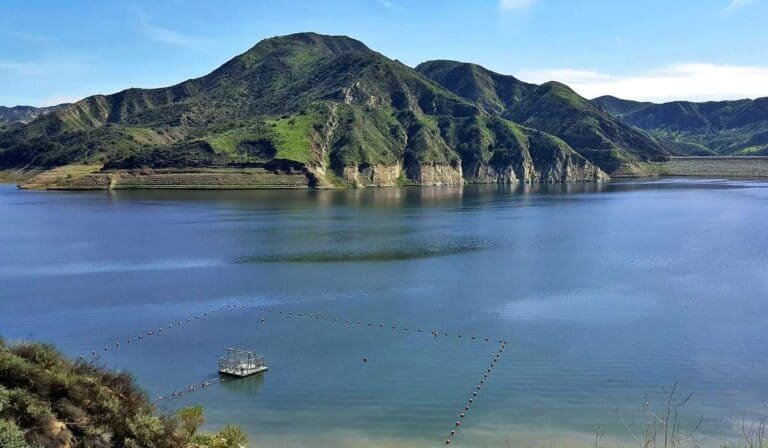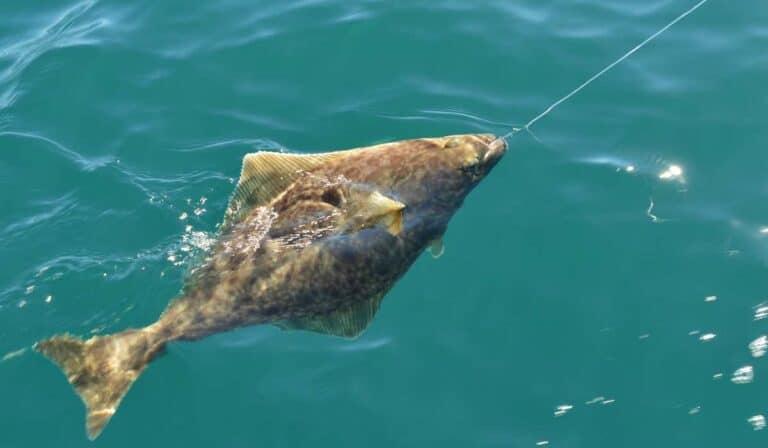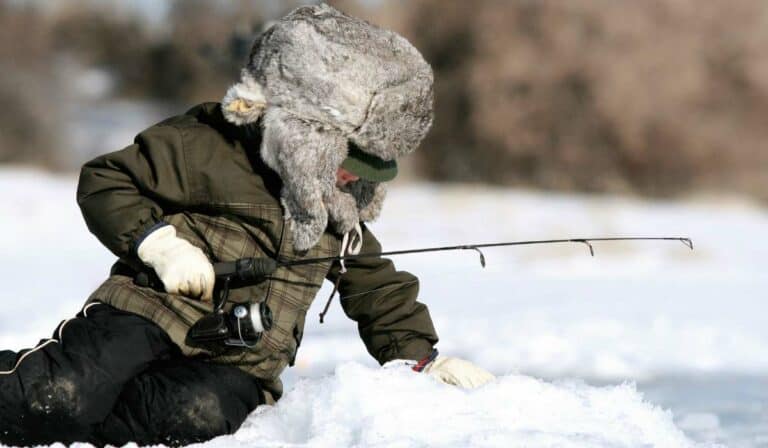Best Tools For Trout Fishing
We’ll start by discussing how to choose the perfect rod and reel combination for your trout fishing needs, followed by an overview of the top lures and baits that are proven to attract these elusive fish. Additionally, we’ll cover essential trout fishing gear that every angler should have in their arsenal.
Beyond just focusing on tools, we’ll also delve into tips for reading trout streams effectively so you can better understand where trout are likely to be hiding. Furthermore, as responsible anglers who practice catch-and-release fishing methods, we will share proper techniques for releasing a trout back into its natural habitat unharmed.
Lastly, our expert advice on strategies for catching trophy-sized specimens will help elevate your skills from novice to pro when it comes to mastering the art of fly fishing for brook or brown trout.
By following this guide on selecting and using only the best tools for trout fishing available today paired with expert insights into stream reading tactics and release practices; even those new to fly-fishing can achieve great results while protecting our beloved aquatic ecosystems.
Table of Contents:
- Choosing the Right Rod and Reel for Trout Fishing
- Selecting the Perfect Rod Size
- Choosing the Right Weight Class
- Finding the Right Action
- Picking the Perfect Reel
- Best Lures for Trout Fishing
- Best Baits for Trout Fishing
- Essential Trout Fishing Gear
- Tips for Reading Trout Streams
- Understanding Trout Behavior
- Identifying Prime Holding Areas
- Analyzing Water Flow Patterns
- Observing Insect Activity
- Using Polarized Sunglasses
- How to Properly Release a Trout
- 7 Strategies for Catching Trophy Trout
- FAQs in Relation to Best Tools for Trout Fishing
- Conclusion
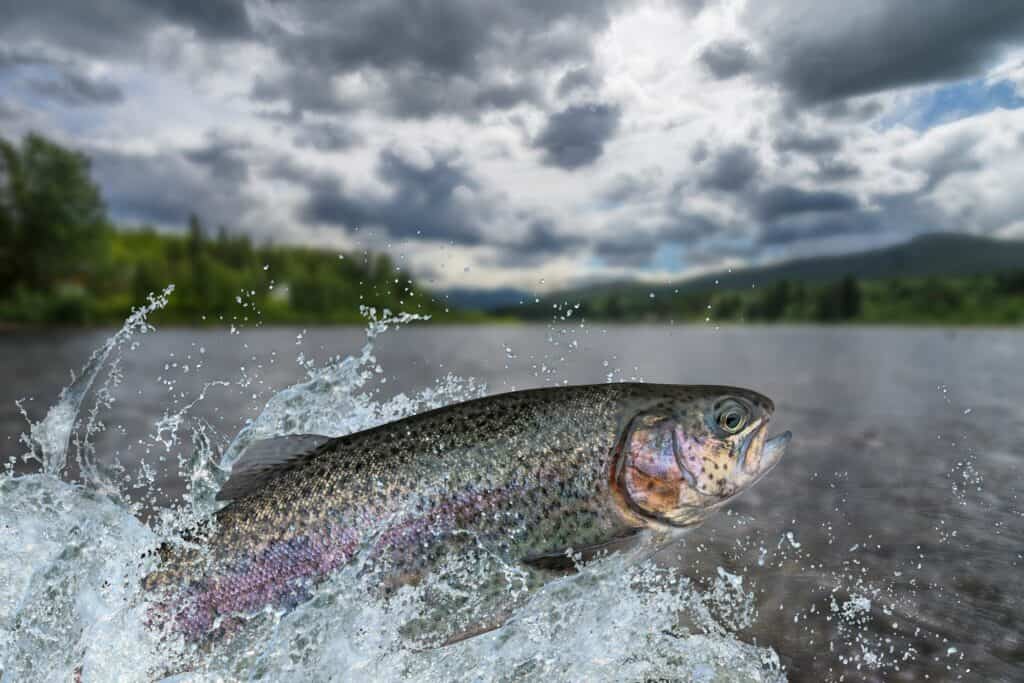
1. Choosing the Right Rod and Reel for Trout Fishing
Finding the perfect rod and reel combination is essential to having a successful day of trout fishing. It can be a daunting task to pick the ideal rod and reel combo for trout fishing from all of the available choices. Choosing the ideal size, weight, and action for your trout fishing setup is essential to having a successful day of angling.
Selecting the Perfect Rod Size
The length of your rod plays a significant role in casting distance and accuracy when targeting trout. A shorter rod (6-7 feet) provides better control and precision when casting in tight spaces or around obstacles like trees or rocks. On the other hand, a longer rod (8-9 feet) offers increased casting distance which can be beneficial when covering larger bodies of water.
Choosing the Right Weight Class
- Ultralight: Ultralight rods are designed for smaller fish species such as brook trout or rainbow trout that typically weigh less than two pounds. These rods have lighter line ratings (usually between 2-6 lbs.) making them perfect for delicate presentations with small lures or baits.
- Light/Medium: Light/medium-weight rods are versatile options suitable for various sizes of trout including brown trout or larger rainbows weighing up to five pounds. They usually have line ratings between 4-10 lbs., allowing you to use slightly heavier tackle without sacrificing sensitivity.
- Moderate/Heavy: If you’re targeting trophy-sized lake-dwelling trouts like mackinaw or large browns over five pounds, consider using moderate/heavy-weight rods with line ratings ranging from 8-20 lbs., providing enough backbone to handle larger fish and heavier tackle.
Finding the Right Action
The action of a rod refers to how much it bends when pressure is applied. There are three main types of actions:
- Fast action: Fast-action rods bend primarily at the tip, providing excellent sensitivity and quick hooksets. They’re ideal for fishing with artificial lures like spinners or jigs where you need to detect subtle bites quickly.
- Moderate action: Moderate-action rods have a more gradual bend throughout their length, offering a good balance between sensitivity and power. This makes them suitable for various techniques such as bait fishing or using small crankbaits.
- Slow action: Slow-action rods bend evenly from tip to butt, allowing for longer casts but sacrificing some sensitivity in return. These are best suited for live bait presentations where detecting bites isn’t as crucial due to natural movement attracting fish attention.
Picking the Perfect Reel
A quality reel is just as important as your rod selection when trout fishing. Spinning reels are most commonly used due to their ease of use and versatility across different techniques. Look for one that matches your chosen rod’s weight class (ultralight, light/medium, moderate/heavy) with smooth drag systems and sufficient line capacity. Additionally, consider investing in an extra spool so you can easily switch between different line types depending on conditions without having to re-spool your entire reel each time.
In summary, selecting the right rod and reel combination will greatly enhance your trout fishing experience by providing you with the perfect balance of sensitivity, power, and versatility. Consider factors such as rod size, weight class, action type, and reel features to make an informed decision that best suits your needs.
Opting for the ideal pole and spool to angle trout is imperative for a prosperous expedition, so be sure to probe your alternatives before settling on one. Now, it’s time to pick the optimal baits for snaring these delectable fish.
Key Points To Remember:
To have a successful day of trout fishing, it’s essential to choose the right rod and reel combination. Factors such as rod size, weight class, action type, and reel features should be considered when making an informed decision that best suits your needs. A quality reel is just as important as your rod selection when trout fishing.
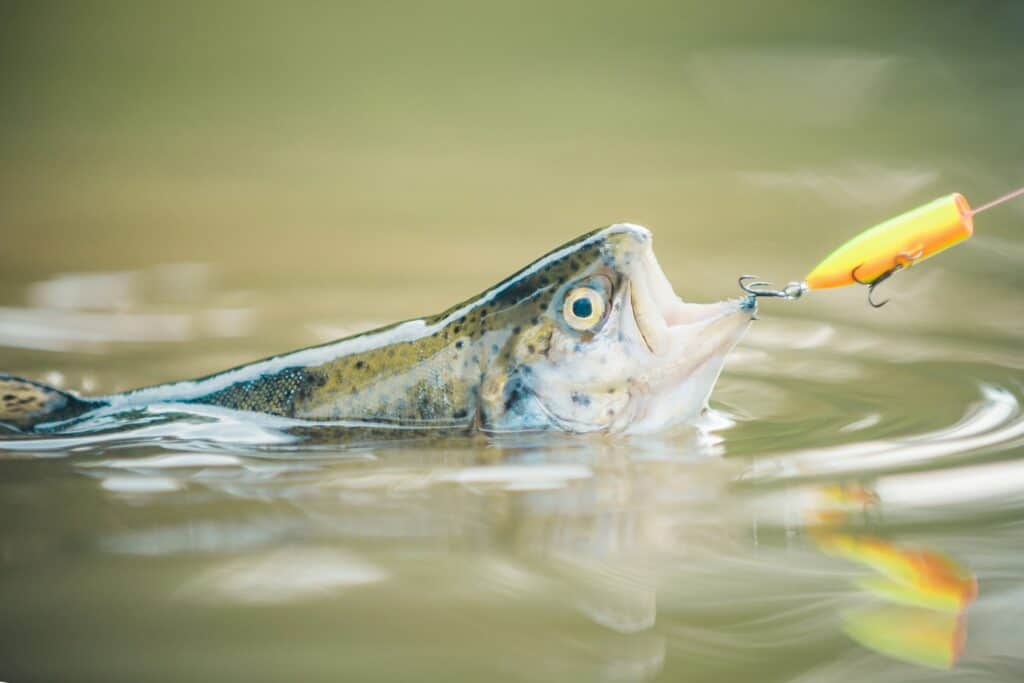
Best Lures for Trout Fishing
Trout are known to be finicky eaters, so having a variety of lures in your tackle box is essential for a successful day on the water. In this section, we’ll explore some of the most effective lures that will help you reel in more trout.
Crankbaits
Crankbaits are an excellent choice when targeting trout because they mimic small baitfish swimming through the water. These hard-bodied lures come in various sizes and colors, allowing you to match local prey species closely. Remember to choose crankbaits with realistic patterns and lifelike swimming action for maximum effectiveness.
Spinners
Spinners work well for catching trout due to their flashy appearance and enticing vibrations created by spinning blades as they move through the water. The rotating blade attracts fish from afar while also creating turbulence that mimics distressed prey, triggering predatory instincts in nearby trout.
Spoons
Spoons have been used successfully by anglers targeting trout for decades. Their wobbling action imitates injured baitfish making them irresistible to hungry predators like trout. Choosing spoons with reflective finishes or bright colors can increase visibility underwater, especially during low-light conditions such as early morning or late afternoon fishing trips.
Jigs
Jigs are versatile lures that can be used to target trout in various water depths and conditions. By adjusting the weight of your jig head, you can control its depth and presentation, making it an excellent choice for fishing different parts of a stream or lake. Pairing jigs with soft plastic bodies or natural materials like marabou feathers will add lifelike movement to entice even the most cautious trout.
Flies
Fly angling is widely accepted as an effective technique for catching trout, thanks to its capability of imitating a broad range of aquatic insects and other prey. From dry flies that float on the surface to nymphs that drift along the bottom, fly anglers have countless options when selecting their next meal ticket. If you’re new to fly fishing, consider starting with some classic patterns like Adams Dry Fly or Woolly Bugger, which are known for their effectiveness in attracting hungry trout.
Key Points To Remember:
To catch more trout, it’s important to have a variety of lures in your tackle box. Crankbaits, spinners, spoons, jigs and flies are all effective options for targeting these elusive fish species. Experiment with different types until you find what works best for your local waters and preferred techniques – remember always keep learning.
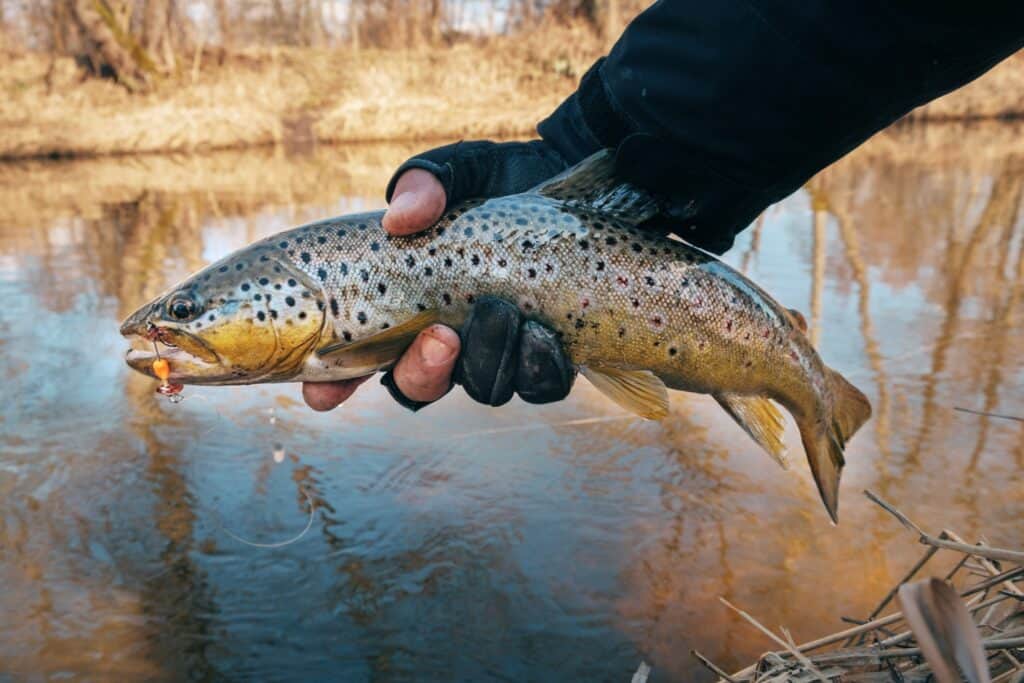
3. Best Baits for Trout Fishing
For successful trout fishing, selecting the proper bait is essential. In this section, we’ll explore some of the best baits for catching these elusive fish and provide tips on how to use them effectively.
A. Worms
Worms are a classic and highly effective bait choice for trout fishing due to their natural presence in aquatic environments. Nightcrawlers and red worms are popular choices among anglers, as they both attract trout with their scent and movement. To maximize your chances of hooking a fish, thread the worm onto your hook so that it hangs straight or slightly curved.
B. Minnows
Minnows, small live fish commonly found in streams where trout reside, serve as an excellent source of food for these predators making them an ideal bait option when targeting larger specimens like brown or rainbow trout. Hook minnows through their lips or just behind their dorsal fin to keep them lively and attractive to hungry trout.
C. Crayfish:
- Freshwater crayfish (also known as crawdads) can be incredibly enticing baits for big brown trout since they’re part of their natural diet.
- To use crayfish effectively, remove its claws before hooking it through its tail or head depending on the presentation you want to achieve.
- Check local regulations before using crayfish as bait, as some areas have restrictions on their use due to invasive species concerns.
D. Salmon Eggs
Salmon eggs are another favorite among trout anglers, particularly when targeting stocked fish that may not be accustomed to feeding on natural prey items. These bright-colored eggs can be purchased in jars and easily threaded onto a small hook or used with an egg loop knot for better presentation.
E. Artificial Baits
In addition to natural baits, there is also a wide variety of artificial options available that can prove effective in catching trout:
- PowerBait doughs and nuggets: Designed specifically for trout fishing, these scented and flavored baits come in various colors and shapes designed to mimic the appearance of insects or other food sources trout feed upon.
- Gulp. Trout Dough: Similar to PowerBait products but made from biodegradable materials, Gulp. Trout Dough offers lifelike taste and texture while being environmentally friendly.
- Soft plastic lures: Soft plastic worms, grubs or minnow imitations can work well when targeting trout, especially when combined with a jig head or drop shot rig.
Remember that the best bait for trout fishing will vary depending on factors such as water temperature, clarity, and the specific species of trout you’re targeting. Don’t be scared to try out dissimilar lures ’til you locate what performs best in your local streams.
Key Points To Remember:
This section explores the best baits for trout fishing, including worms, minnows, crayfish, salmon eggs and artificial baits such as PowerBait doughs and soft plastic lures. It also provides tips on how to use them effectively depending on factors like water temperature and clarity. Don’t be afraid to experiment with different baits until you find what works best in your local waters.
4. Essential Trout Fishing Gear
Fishing for trout can be a hugely delightful and profitable pursuit, yet having the correct gear is indispensable to guarantee achievement on your angling trips. In this section, we’ll discuss some of the must-have items you should pack in your tackle box before heading out to catch some trout.
Waders
Waders are essential for trout fishing, enabling you to traverse water depths not accessible from land. They keep you dry and comfortable while allowing you to access areas that may not be reachable from shore. There are various types of waders available, such as hip waders, waist-high waders, and chest-high waders – choose one based on your personal preference and the depth of water you will be fishing in.
Nets
A good quality fishing net is essential for safely landing your catch without causing harm to the fish or losing it at the last moment. Look for nets with rubber mesh as they are less likely to damage a trout’s delicate scales and slime coat compared to traditional nylon nets.
Tackle Box Essentials
- Fishing Line: A high-quality monofilament or fluorocarbon line between 4-8 lb test strength is ideal for most trout fishing situations.
- Hooks: Stock up on a variety of hook sizes (such as size 6-12) suitable for different bait and lure options.
- Weights: Split shot weights or small sinkers will help keep your bait at the desired depth in the water column.
- Bobbers: A selection of bobbers can be useful for suspending baits off the bottom, making them more visible to trout. Choose from traditional round bobbers or slender pencil-style floats depending on your preference.
- Hemostats/Forceps: These are essential tools for removing hooks from a fish’s mouth safely and efficiently without causing unnecessary harm to the trout.
Polarized Sunglasses
Polarized sunglasses are a key component of trout fishing, as they help to reduce glare on the water surface and protect your eyes from UV rays and errant hooks. Polarized lenses reduce glare on the water surface, allowing you to see through it more easily and spot fish holding areas such as submerged rocks, logs, or weed beds. They also provide crucial eye protection from harmful UV rays and errant hooks during casting.
Rod Holder
If you plan on using multiple rods while fishing for trout or simply want a convenient place to rest your rod while changing lures or bait, consider investing in a sturdy fishing rod holder. There are various styles available ranging from bank-mounted holders to those designed specifically for use with waders – choose one based on your specific needs and preferences.
Key Points To Remember:
To catch trout successfully, it’s important to have the right gear. Waders are essential for wading into rivers or streams, while a good quality fishing net is necessary for safely landing your catch without causing harm to the fish or losing it at the last moment. Other tackle box essentials include high-quality fishing line, hooks of different sizes suitable for various bait and lure options, split shot weights or small sinkers to keep your bait at the desired depth in water column, bobbers to suspend baits off bottom and hemostats/forceps for removing hooks from a fish’s mouth safely and efficiently.
5. Tips for Reading Trout Streams
Fishing in trout streams can be an exciting and rewarding experience, but it requires some knowledge and skill to locate the fish effectively. In this section, we will discuss essential tips for reading trout streams so you can increase your chances of success.
Understanding Trout Behavior
To read a stream effectively, it’s crucial to understand trout behavior. Trout are cold-water fish preferring temperatures between 50-60°F (10-15°C), and thus, identifying prime holding areas for them is key to understanding their behavior. They seek areas with sufficient oxygen levels, cover from predators, and easy access to food sources such as insects or small baitfish.
Identifying Prime Holding Areas
The key to locating trout in a stream is identifying prime holding areas where they feel safe while having access to food. Some common types of holding areas include:
- Riffles: Shallow sections with fast-moving water over rocks create oxygen-rich environments that attract aquatic insects – a favorite meal for trout.
- Pools: Deeper sections with slower currents provide shelter from strong flows and predators while offering resting spots for feeding trout.
- Eddies: Circular currents formed behind large rocks or other obstructions offer protection from the main current and concentrate food sources making them ideal feeding locations for trout.
- Cut Banks: Steep banks on the outside bend of a river create deeper pockets of slow-moving water where larger fish often hide out during daylight hours.
Analyzing Water Flow Patterns
A good understanding of water flow patterns can help you predict where trout are likely to be holding. Look for seams or transitions between fast and slow-moving water, as these areas often concentrate food sources and provide ideal feeding lanes for trout.
Observing Insect Activity
Insects play a crucial role in the diet of most trout species. By observing insect activity on the surface or along stream banks, you can gain valuable insight into what types of flies or lures may be effective at that particular time.
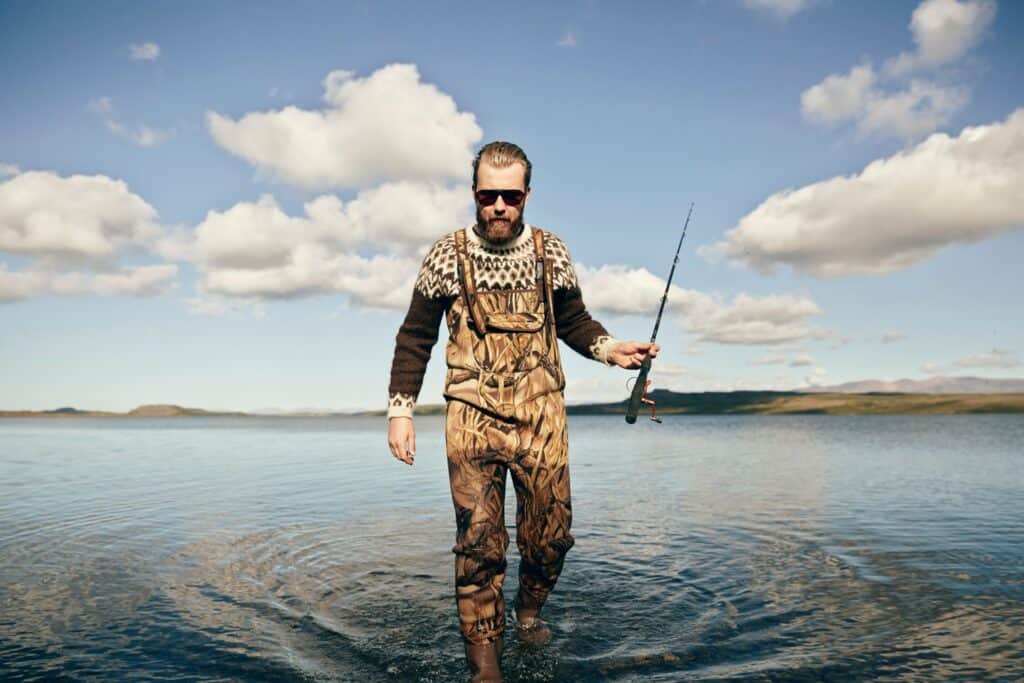
Using Polarized Sunglasses
Polarized sunglasses not only protect your eyes from harmful UV rays but also reduce glare on the water’s surface, making it easier to spot fish and underwater structures that could hold them.
By applying these tips when reading a trout stream, you’ll increase your chances of locating fish and ultimately have more success during your fishing adventures.
Key Points To Remember:
To increase your chances of success when trout fishing, it’s important to understand their behavior and identify prime holding areas such as riffles, pools, eddies, and cut banks. Analyzing water flow patterns and observing insect activity can also provide valuable insight into where the fish may be located. Additionally, using polarized sunglasses can help reduce glare on the water’s surface and make it easier to spot fish.
6. How to Properly Release a Trout
After successfully catching a trout, it is imperative to practice appropriate catch and release methods in order to guarantee the preservation of these majestic creatures in their natural habitat. In this section, we’ll discuss how you can properly release a trout after catching it.
A. Wet Your Hands Before Handling the Fish
Before handling the trout, make sure your hands are wet. This helps protect the fish’s sensitive slime coat that serves as its first line of defense against infections and parasites. Simply dip your hands into the water before grabbing hold of your catch.
B. Use Rubberized Nets and Barbless Hooks
To minimize harm to the fish during landing, use rubberized nets. These nets are gentler on the fish compared to traditional nylon or cotton mesh nets which can damage their scales and fins. Additionally, using barbless hooks makes releasing a trout much easier and less stressful for both you and the fish.
C. Keep The Fish In Water As Much As Possible
- If possible, unhook the trout while keeping it submerged in water.
- If you must lift it out of water briefly (e.g., for taking photos), do so gently by cradling its body with one hand under its belly while holding onto its tail with another hand.
- Lift only as high as necessary – avoid lifting higher than your waist level – then lower back into water immediately after snapping quick pictures or removing hooks from mouth area if needed.
D. Revive The Trout Before Releasing It
Gently hold the trout upright in the water and move it slowly to help revive it before releasing. You can do this by slowly moving the fish back and forth, allowing water to flow through its gills. Be patient – some trout may take longer than others to recover from being caught.
E. Release The Trout In A Safe Area
Choose a calm area of water with sufficient depth for releasing your catch. Avoid areas with strong currents or shallow waters where predators might be lurking nearby.
Care should be taken when handling a trout to ensure it is not injured during the release. With that in mind, let’s move on to strategies for catching trophy trout which can provide an even greater challenge and reward.
Key Points To Remember:
To properly release a trout after catching it, wet your hands before handling the fish to protect its sensitive slime coat. Use rubberized nets and barbless hooks to minimize harm during landing, keep the fish in water as much as possible, revive it before releasing it in a safe area with sufficient depth for releasing your catch.
7 Strategies for Catching Trophy Trout
If you’re a passionate angler with aspirations of catching the ultimate trophy trout, then this section is sure to be your guide. For those seeking to land a giant trout, there are tactics that can be employed and some patience needed in order to increase the likelihood of success. Here are some tips to help make your dream come true:
1. Use Larger Lures or Baitfish
Trophy trout are usually more interested in larger prey items than their smaller counterparts. To catch these big fish, try using larger lures, such as oversized crankbaits, swimbaits or even large streamer flies if fly fishing is your game. Alternatively, live baitfish like minnows or shiners can also be very effective at attracting big trout.
2. Target Deeper Waters
Larger trout often prefer deeper water where they feel safer from predators and have access to cooler temperatures during warmer months. When searching for trophy-sized fish, focus on areas with deep pools or drop-offs near structure like submerged logs or rocks.
3. Fish During Low-Light Conditions
During the early morning hours before sunrise and late evening hours after sunset, trophy trout are more likely to emerge from their hiding spots in search of food – so be prepared to hit the water at these times for a chance at landing one of these elusive giants. Be prepared to hit the water early or stay late if you want a shot at hooking one of these elusive giants.
Bonus Tip:
- Fish during the colder months – Big trout are known to feed heavily in preparation for winter’s harsh conditions, making late fall and early winter prime times to target these fish.
4. Use Heavier Line and Stronger Tackle
Trophy trout are powerful fighters that can easily break light line or tackle. To avoid losing the fish of a lifetime, make sure you’re using heavier fishing line (8-12 lb test for spinning gear or 0X-2X tippet for fly fishing) and strong hooks that won’t bend under pressure.
5. Be Patient and Persistent
Catching trophy-sized trout requires patience, persistence, and sometimes even a bit of luck. Don’t give up if your first attempt doesn’t yield success – keep experimenting with various approaches until you discover the one that works best in your specific spot.
With dedication and experimentation, anglers can soon be rewarded with a trophy-sized trout. Remember to practice catch-and-release with these magnificent creatures so they can continue growing even larger for future anglers.
Key Points To Remember:
To catch trophy-sized trout, use larger lures or baitfish, target deeper waters with structure like submerged logs or rocks, and fish during low-light conditions. Use heavier line and stronger tackle to avoid losing the fish of a lifetime and be patient and persistent in trying different strategies until you find what works best for your specific location.
FAQs in Relation to Best Tools for Trout Fishing
What Equipment is Needed for Trout Fishing?
For a successful trout fishing experience, you will need a suitable rod and reel, lures or baits, a tackle box with hooks, sinkers, and swivels, fishing line (4-8 lb test), a landing net, polarized sunglasses to spot fish in the water, waders if necessary for stream access, and a valid fishing license.
What is the Most Effective Trout Fishing Method?
The most effective method for catching trout varies depending on factors like location and conditions. However, fly-fishing using artificial flies that mimic insects can be highly productive as it imitates the natural feeding habits of trouts. Other popular methods include spinning with lures or baitcasting using live baits such as worms or minnows.
What Lure Catches the Most Trout?
There isn’t one specific lure that works best for all situations; however, some proven options are inline spinners like Mepps Aglia, spoons such as Acme Kastmaster, crankbaits including Rapala Original Floating Minnow, and soft plastic swimbaits resembling small fish.
What is the Best Hook for Trout Fishing?
The ideal hook size depends on your chosen bait or lure, but generally speaking, smaller hooks ranging from size 10 to 14 work well when targeting average-sized trouts. For larger trophy-size specimens, consider sizes 6-8. Opt for single barbless hooks to minimize damage when releasing fish, and use circle hooks if fishing with live bait.
Conclusion
In conclusion, having the best tools for trout fishing can make all the difference in your success on the water. It’s important to choose the right rod and reel, use effective lures and baits, and have essential gear. Additionally, learning how to read trout streams and properly release fish can enhance your overall experience.

